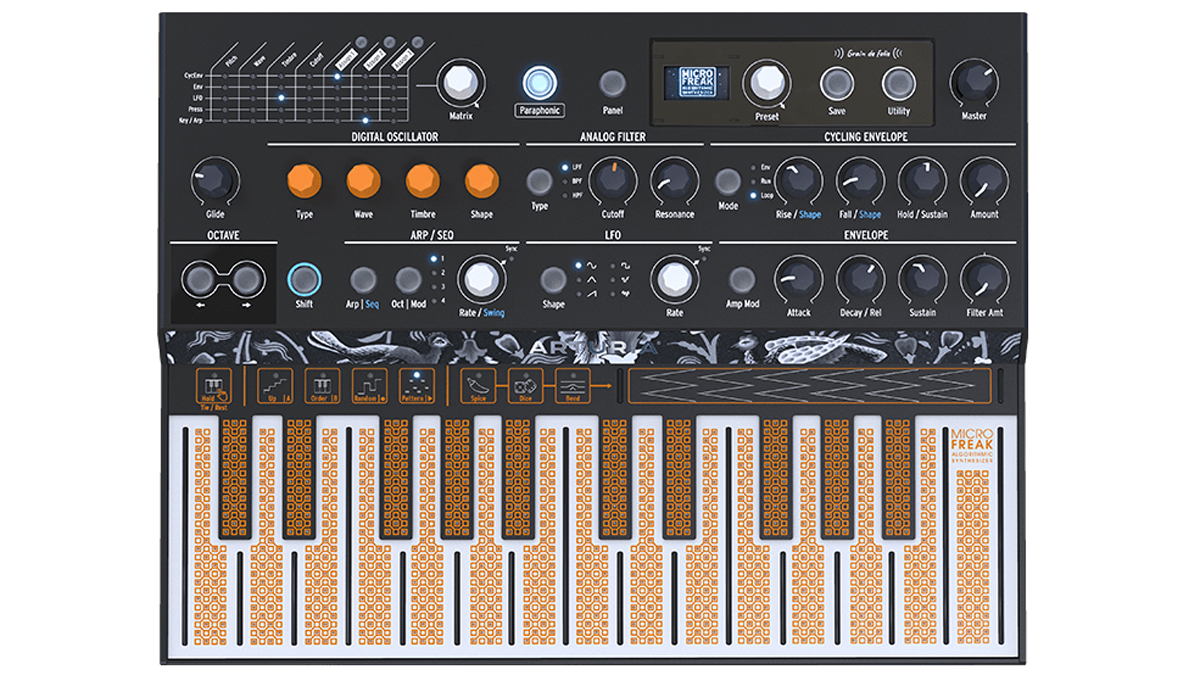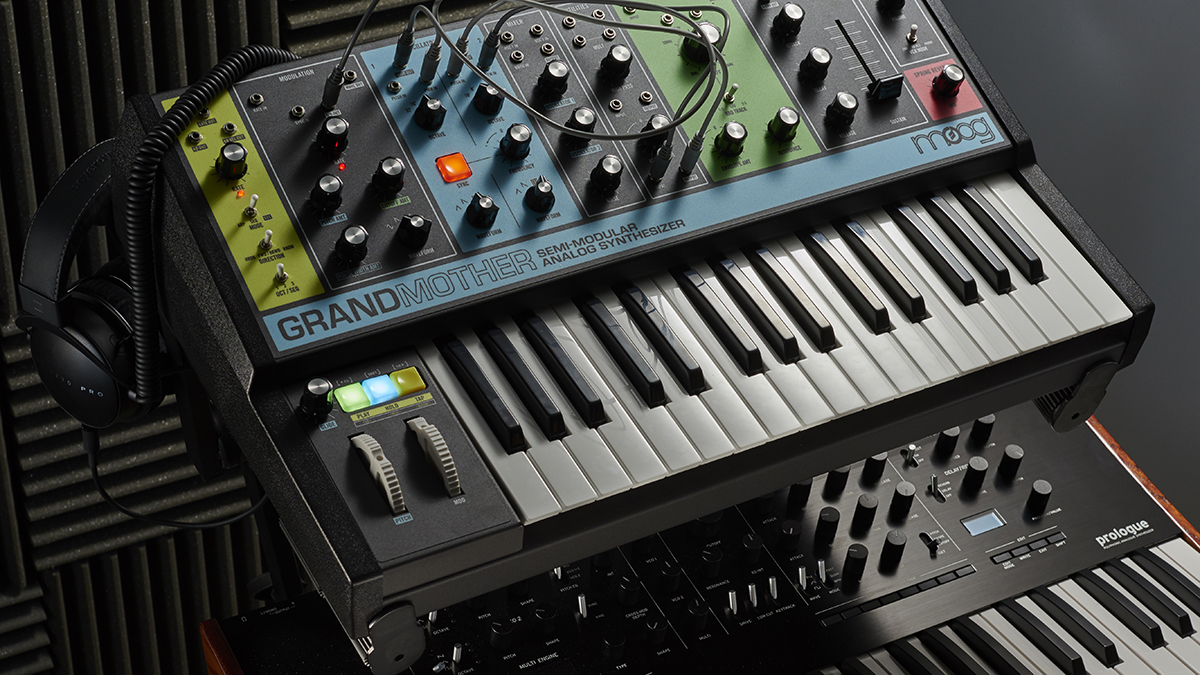NAMM 2019: Arturia thinks different and digital with the MicroFreak synth
A vintage analogue emulation this is not
NAMM 2019: From releasing software emulations of classic analogue synths, Arturia’s long and winding development road has somehow ended up with the company releasing a digital hardware synth, the MicroFreak. A monophonic and 4-voice paraphonic instrument, this has a slightly quirky look about it, and Arturia says that it also boasts a rather unusual feature set.
We should say that MicroFreak isn’t exclusively digital. As well as a multimode digital oscillator, it also includes an Oberheim SEM-inspired analogue filter.
Seven of the oscillator modes are based on Mutable Instruments' Plaits oscillator design (though this isn't a collaboration between the two companies), and Arturia says that you can recreate the sound of that module. The full list of modes includes Superwave, Harmonic Oscillator, Karplus-Strong, Wavetable, Virtual Analog, Waveshaper, FM, Grain, Chords, Speech, and Modal, with Arturia also noting that more oscillators could be added in the future via firmware updates.
One of MicroFreak’s most notable features is its PCB keyboard, which we suspect might divide opinion. Arturia says that it’s pressure-sensitive and fast, and also supports polyphonic aftertouch. It remains to be seen how playable it is, though.
Other items on the spec sheet include a multi-point modulation matrix, a sequencer-arpeggiator with controlled randomness Spice and Dice parameters, a cycling envelope, 128 factory presets, and space for 64 user sounds. An OLED display lets you keep track of what’s going on.
Priced at $349/€299, the MicroFreak is an interesting proposition, and could find a market among producers who are looking for something a little different for their studio. That’s assuming the whole thing isn’t a wind-up, of course: the synth is set to ship on 1 April, but Arturia assures us that it’s deadly serious.

Arturia MicroFreak features
- Synthesizer with 192 preset slots and 128 factory presets
- 11 Digital oscillator with variable mode, including collaborations with Mutable Instruments
- Analog State Variable Filter, 12dB/octave, resonant, Low Pass, Band Pass, High Pass
- ADSR envelope
- Cycling Envelope offering two modes: Envelope and LFO
- LFO with Sync: Sine, Tri, Saw, Square, Random, Slew Random
- Modulation matrix with 5 sources and 7 destinations (3 custom destinations)
- Monophonic or Paraphonic modes - Up to 4 voices
- 25-key capacitive keybed with polyphonic aftertouch
- Capacitive touch strip
- Crisp OLED display for editing and parameter values
- Powerful arpeggiator: Up, Order, Random, Pattern modes; Spice & Dice Gate randomizers
- 64-step sequencer: 2 patterns per preset; 4 automation tracks per preset
- CV / Gate / Mod outputs
- USB, Clock and MIDI in and out
- 6.35mm master and 3.5mm headphone output
––––––––––––––––––––––––––
Want all the hottest music and gear news, reviews, deals, features and more, direct to your inbox? Sign up here.
NAMM 2019 - all the news
The dust is settling, but our ears are still ringing. You'll find all the stories that counted in our massive news hub. Below, enjoy our editors' findings as we regrouped at the end of the show.

I’m the Deputy Editor of MusicRadar, having worked on the site since its launch in 2007. I previously spent eight years working on our sister magazine, Computer Music. I’ve been playing the piano, gigging in bands and failing to finish tracks at home for more than 30 years, 24 of which I’ve also spent writing about music and the ever-changing technology used to make it.
